10 Ways To Create Your Own Meditation Room
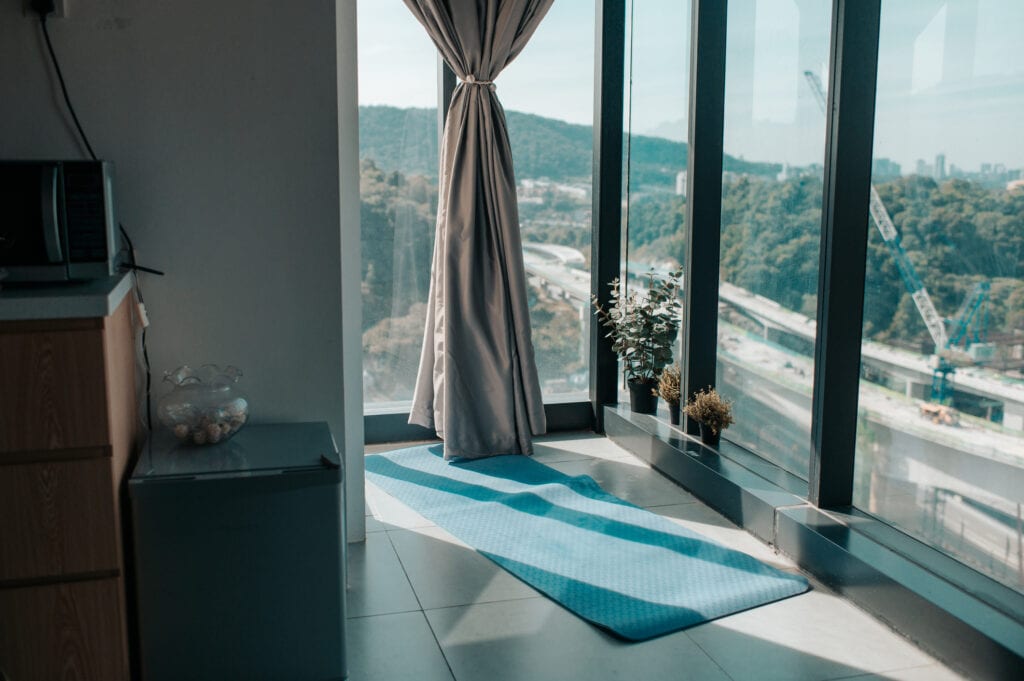
Imagine having a room in your home that heals your mind, body and soul? Wouldn’t it be amazing to have a special room inside (or outside) of your home that’s devoted to peace, tranquility and your emotional well-being? A room that allows you to escape the daily stresses of life and connect with a higher power? A meditation room will give you a place to do exactly this.
We suggest that everyone should create a space in their homes for daily meditation; a space that provides you with the opportunity to recharge your body both physically and mentally, and keep you balanced. The benefits of meditation are still being uncovered, but all discoveries to date show that meditation has a rich healing, transformative power like no other. Some studies have shown that meditation actually has the power to change the way our brains work.
While there is not a specific set of rules that need to be followed when creating a meditation room, there are some things you should take into consideration. Take some inspiration from the following ten ways to create your own mediation room, but most importantly, follow your mind and heart, only putting in elements you love—elements that create a personal feeling of zen-like bliss.
Tips for creating a relaxing meditation room
1. Choose a feel-good space

You want to pick a room in your home that makes you feel good. This means a room that, when you walk into it, makes you smile. In addition, you want it to be a quiet room in the house, and definitely a room with a limited amount of traffic.
When choosing the room, pay attention to the lighting as well. For instance, a room that has a lot of natural light will instantly enhance your mood. This means that you might want to choose a room that faces the sun for the time of day you plan to meditate. Or better yet, a room that has a sunset view—now that would be a gorgeous way to begin meditation!
If you cannot find a ‘room’ that possesses these qualities, consider an outdoor space. This may be your patio, your deck, or even your floral garden. You want a place that allows you to relax your mind and your body, without being distracting.
2. Play meditative music
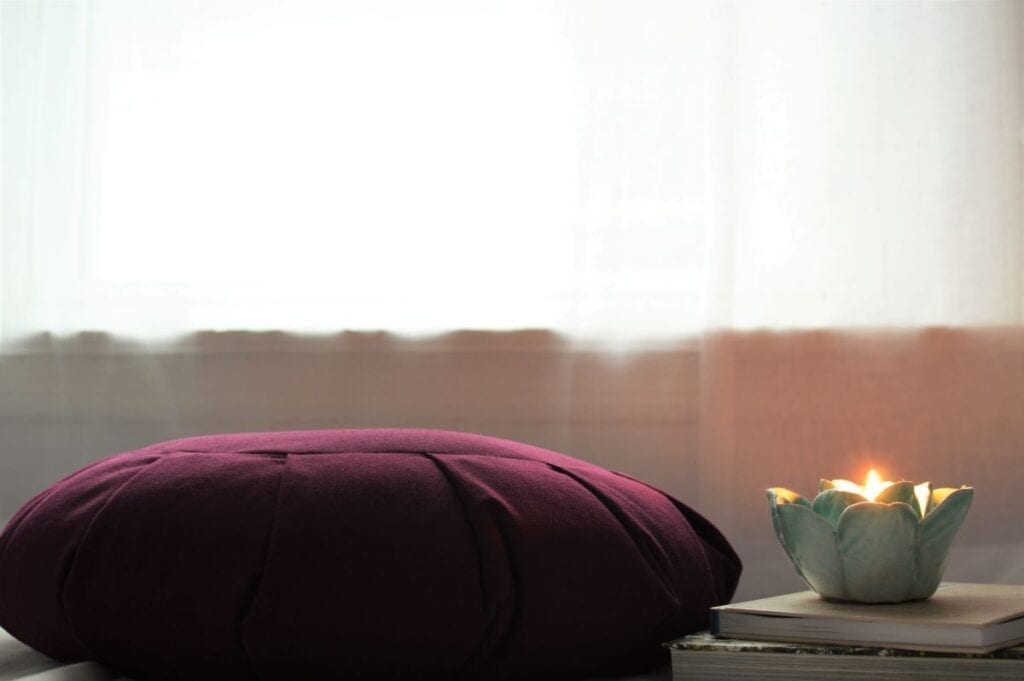
Although not a necessary element, music can be very relaxing for many individuals. This is particularly beneficial for those who live in a busy city area, where the sounds of traffic, trains, and sirens are constantly coming through the walls.
The meditative music, although quietly played in the background, can help drown out all the other distractions within the home, allowing you to gain a tranquil and peaceful state while meditating—similar to the sound of the water fountain.
When it comes time to choose the music, it is recommended that you choose music without lyrics. It does not necessarily have to be classical music, but any sounds you find soothing, such as ocean sounds, birds chirping, or the whistling sounds of the wind. Make sure the tracks are long enough to continue playing through your entire mediation session, and consider putting the sounds on repeat to avoid interruption.
3. Clean & uncluttered
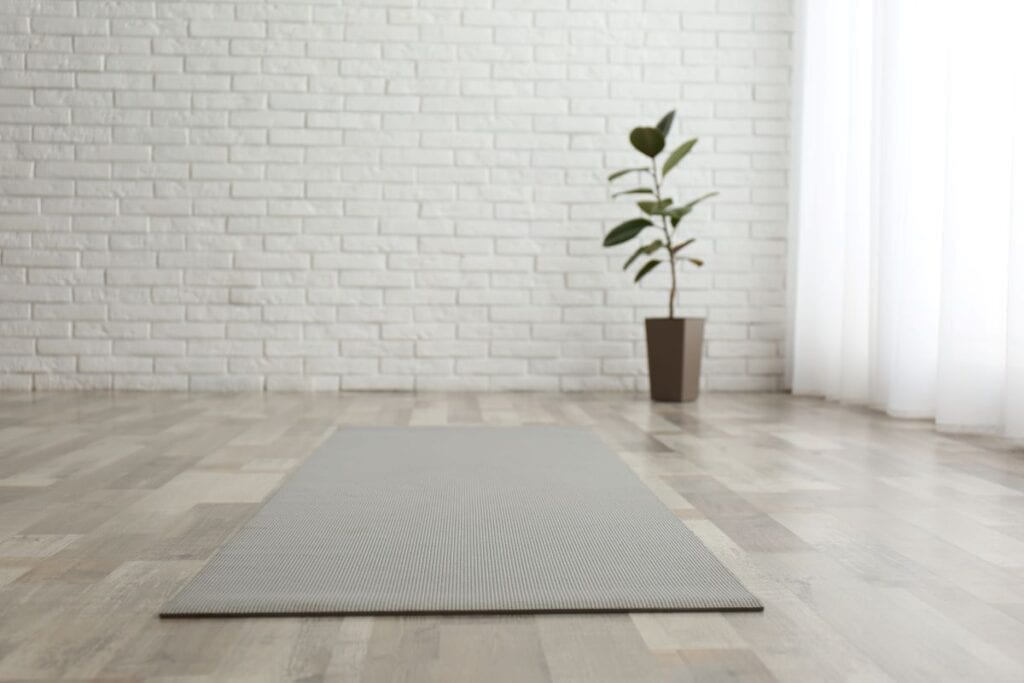
Speaking of distractions, there is nothing more distracting than a cluttered area, especially when you are trying to relax. You want to make sure there are minimal amounts of ‘extras’ in the room.
This means that you should not try setting up a meditation room in an office. There is too much going on in the space with a desk, papers, filing cabinets – not to mention the stressful thoughts that come with what’s in an office – work, bills, etc.
Consider emptying out the room to contain only a few elements. A few basic recommendations include a small table, a yoga mat, a throw rug, and a pillow for meditation.
4. Aromatherapy

Another element to consider in your mediation room is aromatherapy. The use of essential oils from plants, such as lavender, chamomile, and peppermint, can really soothe the soul, the mind, and the body.
From burning candles and incense, to heating oils, you can receive the benefits of aromatherapy while meditating. Not only does aromatherapy help you relax, but it also provides other benefits. This form of therapy is gaining momentum and is on its way to becoming a mainstream healing aide that is believed to stimulate brain function.
There has also been evidence to show it boosts the immune system, relieves muscle pain, and reduces or eliminates stress. These are all great reasons why you should include aromatherapy in your meditation room.
5. A serene paint palette
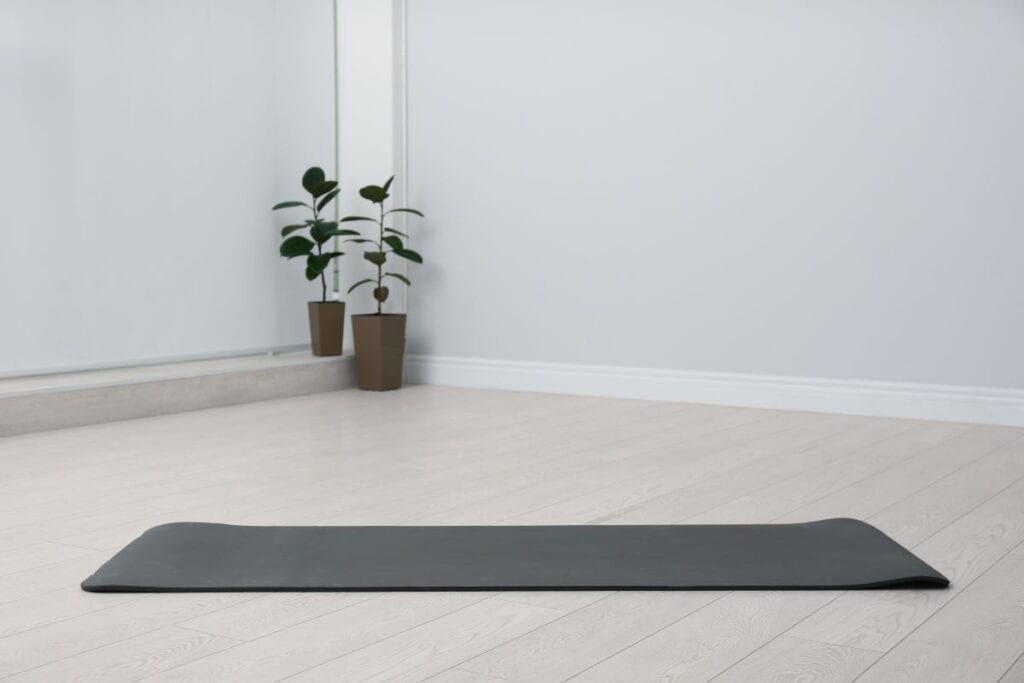
Aside from the physical elements and sensory objects, you also want to take into consideration the color of the room. You want to paint the room to match the mood you are trying to achieve.
Some may say that pastel shades are a much better option as opposed to bright or dark shades—thinking that pastels are more soothing and more relaxing. Although, others may argue this point and prefer a very dark paint palette— thinking the dark colors would make the room feel womb-like and envelope them in relaxation.
Regardless of the color you choose, room color affects your mood, so decide on one that calls to your meditative needs, and makes you feel calm and relaxed.
6. Bring nature into your meditation room
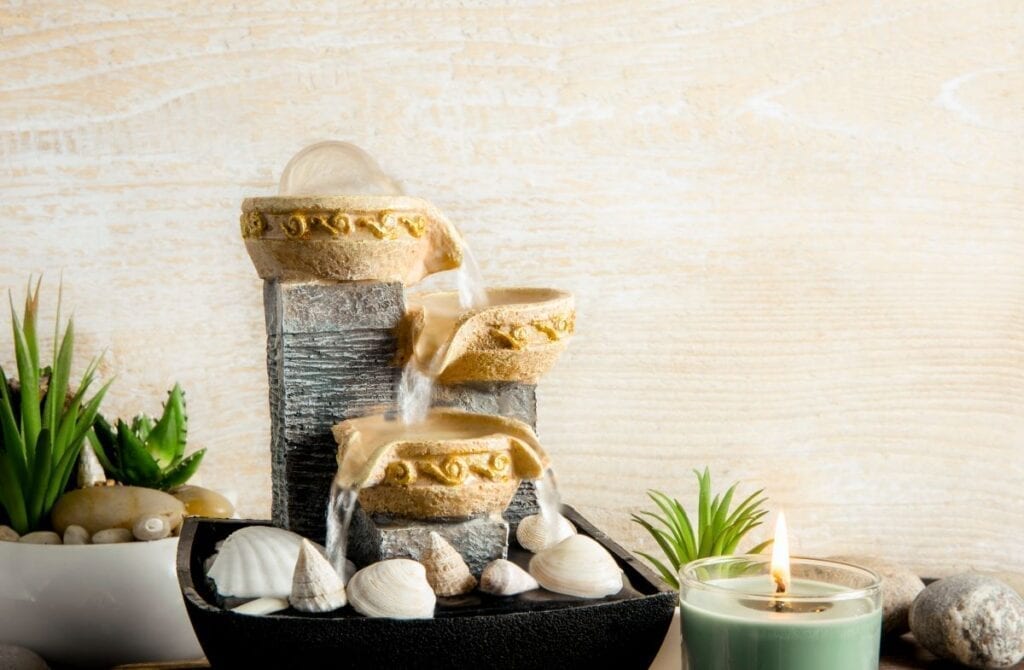
Nature is organically relaxing and healing, so it only makes sense that you bring some natural elements into the room where you want to relax and meditate. In fact, most believe that mediation is all about connecting yourself – mind and body – with nature and your surroundings. While it would be ideal to meditate outside in a calming, natural environment, it is not always possible if you live in a busy urban environment.
Consider adding touches of nature to your meditation room— it will instantly become infused with harmony and balance. You can choose any natural elements you prefer. This could be a plant (consider the scent of jasmine), a vase of cut flowers, jars filled with sand and seashells, or even a small water fountain.
In fact, a water fountain is a must for every mediation room. If you can’t meditate on the beach while the sounds of the changing ocean tides fill your ears, at least a small, indoor waterfall will offer similar soothing sounds (and will drown out the sounds of the bustling city outside your doors).
7. Add a personal touch

When creating your mediation room, you definitely want to include some of your own personal touches. This can be any element, smell, sound, or object that particularly soothes your body and relaxes your mind.
Think of items, such as bells, chimes, crystals, affirmation stones, beads, and artwork. Any of these are great elements for creating a serene and peaceful environment for you to focus solely on meditating.
Remember, however, that you do not want to overcrowd the space. It is important for a clean and clear environment to keep your mind open. Choose only a few pieces at a time, and swap them out for different ones now and again if you cannot decide.
8. Fresh air is important
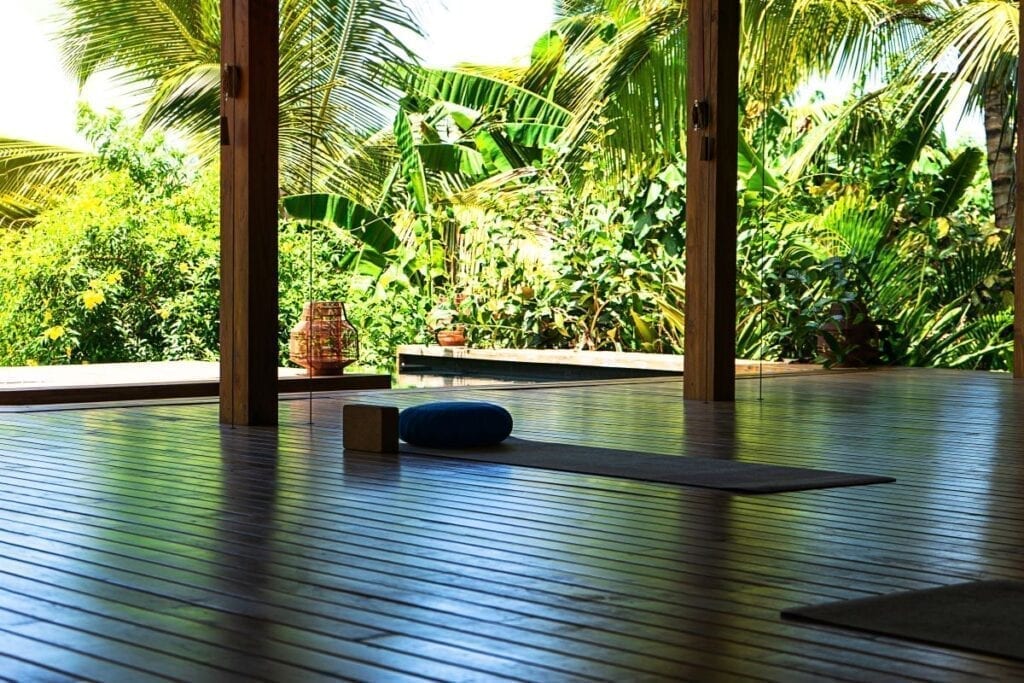
Aside from the aromatherapy smells you have in the room, you also want to make sure you have fresh air. Fresh air has many benefits, including boosting your brainpower, improving your overall health, and helping you feel refreshed.
If your space is outdoors, this will not be difficult to obtain. However, if you are indoors, you want to make sure the room is well-ventilated, and you have the opportunity to experience a cool breeze now and again.
If you are in a room that does not have any windows or ceiling fans, consider bringing in a standing fan that also functions as an air purifier. Choose one that has ‘quiet’ technology, so that it does not interfere with your serene sounds.
9. Lighting makes a difference
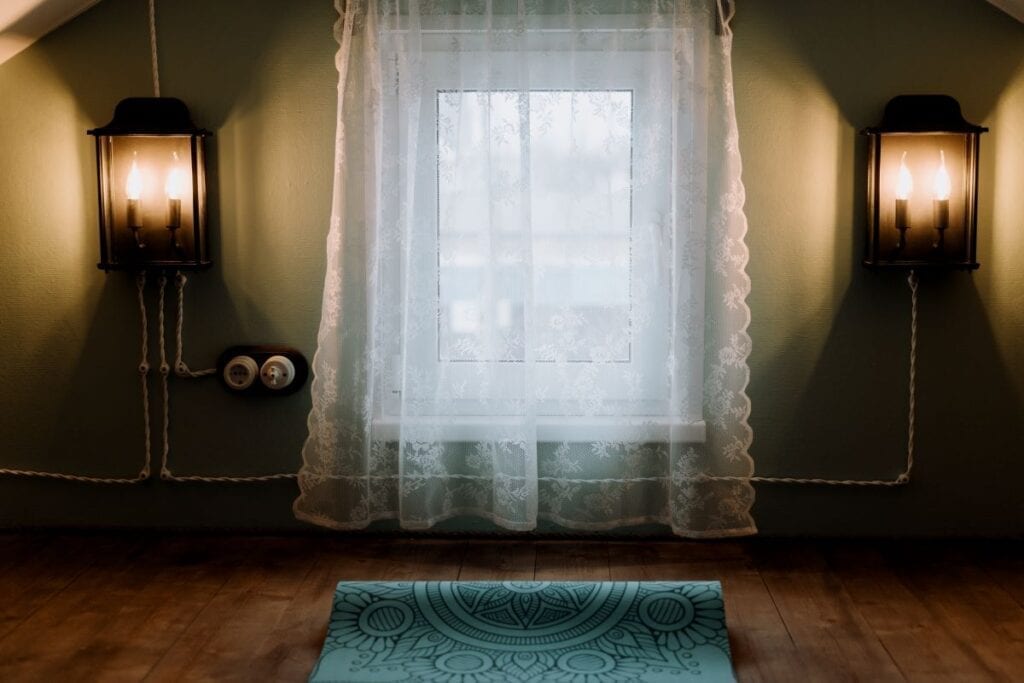
As was mentioned earlier, best-case scenario is that you find a room that has lots of natural light. To keep the room feeling cozy, however, you do want some sort of window treatments. It is recommended that you choose a sheer fabric in a light shade that will diffuse the light.
If the room you choose lacks natural light, you really want to focus on the light fixtures you choose. Depending on your personal preference, you may want dim lights or bright lights. Make sure you have the ability to have both options, because your mood can change from day-to-day.
If you have chosen an outdoor space, make sure the area is not too bright from sunlight during the time you wish to mediate. If possible, try to create a shade with an umbrella or a structure that allows you to hang sheer curtains. This will keep the sun from irritating your eyes and keeping your mind too awake.
10. No technology allowed
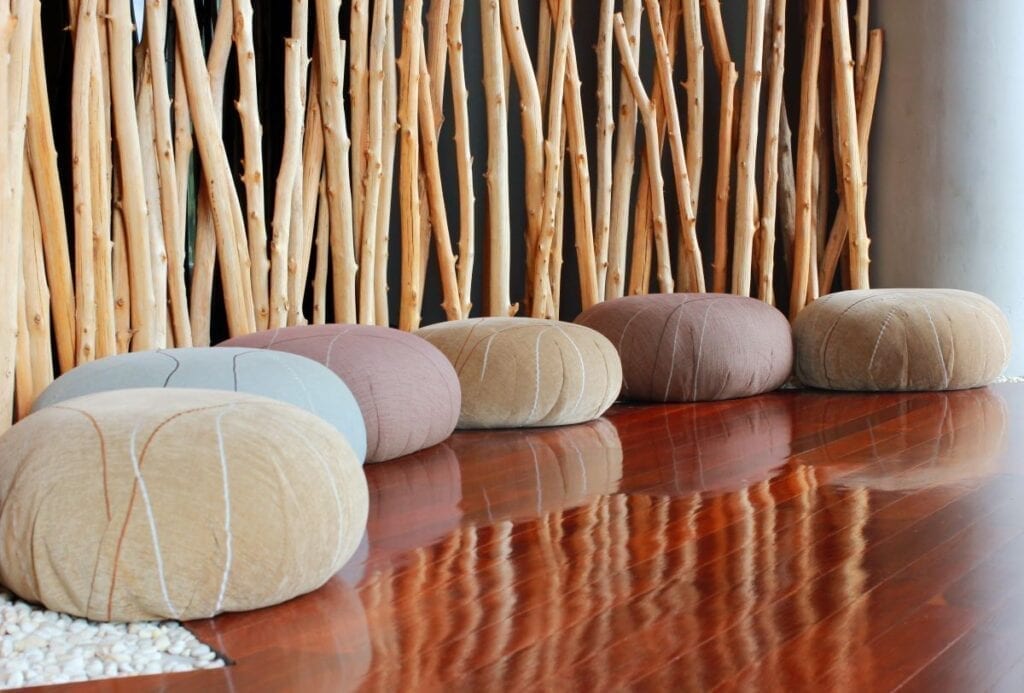
While there are no specific rules to creating a meditation room, we would like to make one hard-fast rule—no electronics, aside from your music player. This means, no phones allowed. From the distracting ‘ping’ of text messages, emails, and phone calls —just say no to phones in the meditation room.
You want to be able to ‘get away from it all’ when you are meditating, and a phone will not allow this to happen.
In addition to no phones, it is also best to avoid other electronics, such as video game devices and the TV. While you enjoy relaxing in front of the TV, this is not the type of relaxation that you are trying to achieve during mediation.
The bottom line
There are many elements that you should consider when creating a mediation room. Choose a quiet spot to avoid noisy distractions and bring in elements of nature, creating a good base to start from.
Take what you have learned here and start looking around your home. You just may be surprised at what room brings you the relaxing feeling you are looking for, and deserve. Still your mind, erasing all the worldly issues, and open your body (and home) to the healing powers of meditation.



